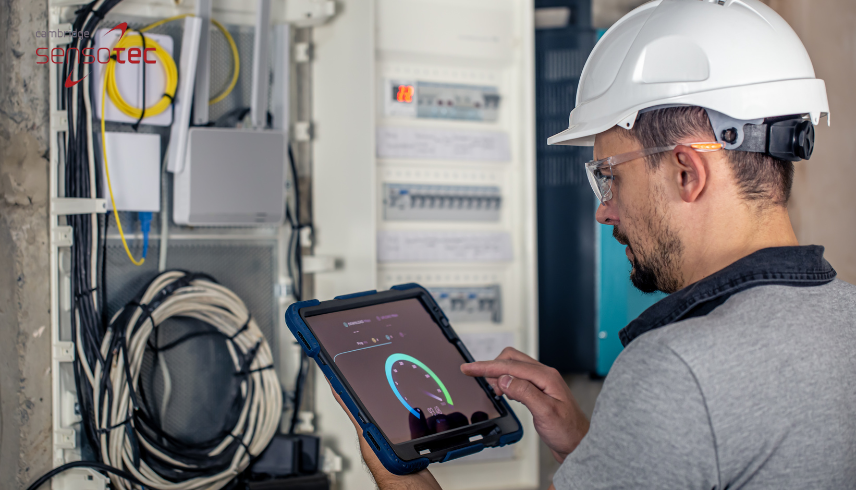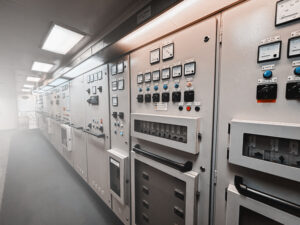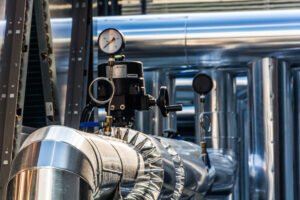
Introduction
Sulphur hexafluoride (SF6) is a synthetic, man-made gas. It is colourless, odourless, non-flammable, and chemically stable. Though it may sound unfamiliar to most people, it plays a critical role in many industries, especially those involving electricity, medicine, and scientific research.
Despite its usefulness, SF6 comes with a significant drawback: it is a potent greenhouse gas. With a Global Warming Potential (GWP) over 23,000 times greater than carbon dioxide and an atmospheric lifespan of thousands of years, it demands responsible handling and a shift towards cleaner alternatives.
In this article, we will explore what sulphur hexafluoride is used for, how it works, and why it is both valued and scrutinised.
Properties of Sulphur Hexafluoride
SF6 is best known for its electrical insulation and arc-quenching capabilities. These properties stem from its unique chemical structure. The gas is inert, meaning it does not easily react with other substances. It is also five times heavier than air, making it effective at blanketing surfaces or filling spaces without easily escaping.
Because it resists breakdown under electrical stress, SF6 can insulate very high voltages in tight spaces. This is what makes it so valuable in power systems. It also remains stable over long periods and under a wide range of temperatures.
Yet, its environmental footprint is massive. Released into the atmosphere, it contributes significantly to climate change, making strict control essential.
Electrical Power Applications
The most widespread use of SF6 is in the electrical power industry. In this field, it is used in:
High-voltage switchgear
Gas-insulated substations
Circuit breakers
Transformers
When electrical circuits break or switch on under load, an electric arc forms. SF6 extinguishes this arc instantly, protecting equipment and preventing fires or failures. Its insulating quality also allows manufacturers to design smaller, safer components, essential in cities where space is limited.
Compact switchgear filled with SF6 is quieter, cleaner, and more reliable than air-insulated systems. As a result, it’s widely adopted in utilities, wind farms, and industrial plants.
Medical Uses
SF6 is used in medicine in a few very specific, but important ways:
- Ultrasound imaging: Microbubbles of SF6 are injected into the bloodstream to enhance visibility. These bubbles help doctors see the heart and liver more clearly during scans.
- Eye surgery: In retinal detachment procedures, SF6 is injected into the eye to gently press the retina back into place. Over time, the gas dissolves and is replaced by natural fluids.
- Lung function testing: In respiratory medicine, SF6 helps measure how air moves through the lungs. Its inert nature makes it safe and effective for detecting conditions like asthma or COPD.
These medical applications rely on SF6’s stability and harmless behaviour in the body under controlled use.
Scientific and Industrial Research
SF6 is widely used in laboratories and industrial research due to its unique properties.
In environmental science, it acts as a tracer gas. Scientists release small amounts of SF6 into the air to track airflow, detect ventilation patterns, or measure how pollutants spread. Its detectability even in tiny quantities makes it ideal for this work.
In engineering, it is used for leak detection. Systems such as sealed electronics, vacuum chambers, or pipelines can be tested by introducing SF6 and checking for leaks with sensitive detectors.
SF6 also plays a key role in particle physics. High-voltage equipment like particle accelerators uses it for insulation, ensuring safety and precision in experimental settings.
Semiconductor and Electronics Industry
In electronics manufacturing, SF6 is used for plasma etching. This process involves directing plasma at a silicon wafer to etch away unwanted material, forming the delicate patterns found in microchips.
Because of its ability to react with silicon in a controlled manner, SF6 is vital in producing semiconductors, sensors, and circuit boards. It’s used in the most advanced fabrication labs where accuracy is measured in nanometres.
Its clean decomposition and non-contaminating nature also make it perfect for use in cleanroom environments, which are essential for high-precision electronic devices.
Aerospace and Defence Applications
SF6 is also valuable in the aerospace and defence sectors.
It is used in altitude simulation chambers to replicate the vacuum and low-pressure conditions of space. Components for satellites and aircraft are tested under these conditions to ensure they can withstand the rigours of flight or orbit.
In space simulation, SF6 helps maintain stable, high-voltage conditions. Its reliability ensures accurate testing without the risk of sparks, fires, or chemical breakdowns.
Environmental Concerns and Regulations
While SF6 is incredibly useful, its environmental impact cannot be ignored. It is one of the most potent greenhouse gases known. If released, even in small amounts, it remains in the atmosphere for thousands of years, trapping heat far more effectively than carbon dioxide.
To address this, many governments have implemented strict regulations. In the European Union, SF6 use is tightly controlled under the F-Gas Regulation. Companies must monitor for leaks, maintain records, and use approved recovery systems when servicing or disposing of equipment.
Many firms now use recycling systems to capture and reuse SF6. These systems extract used gas, purify it, and return it to service, preventing emissions and saving money.
Future Trends and Alternatives
As the world shifts toward sustainable technologies, the search for SF6 alternatives is gaining momentum. Several options are being explored, including:
- Vacuum switchgear: These systems use vacuum instead of gas to extinguish arcs and insulate circuits.
- Fluoronitrile gas mixtures: These have a much lower environmental impact but similar insulating properties.
- Fluoroketones: Emerging as promising substitutes, they are already being tested in switchgear.
Some manufacturers have developed SF6-free equipment that meets or even exceeds current standards. These innovations are still evolving but represent a significant step toward greener infrastructure.
Summary
Sulphur hexafluoride is an impressive gas with unmatched capabilities in certain fields. It allows power networks to function safely, enables medical procedures, advances scientific research, and supports high-tech manufacturing.
But its environmental cost is high. With awareness growing and regulations tightening, industries are being pushed to adopt safer practices and explore alternatives.
The future lies in balance: continuing to use SF6 where it is absolutely essential, while investing in new technologies and practices that reduce or eliminate its environmental impact.
For companies like Cambridge Sensotec, which specialise in gas analysis and detection, the challenge is also an opportunity to lead in innovation, safety, and environmental responsibility.
Frequently Asked Questions
Is SF6 dangerous to humans?
Not directly. It is non-toxic and non-flammable. However, in enclosed spaces, it can displace oxygen, which poses a suffocation risk. Proper handling and ventilation are important.
Why is SF6 still used if it’s harmful to the environment?
Because its technical benefits are unmatched in certain critical applications. Until alternatives match its performance, SF6 remains necessary in some areas.
Can SF6 be recycled?
Yes. Special recovery systems allow it to be captured, cleaned, and reused. This reduces environmental harm and complies with regulations.


